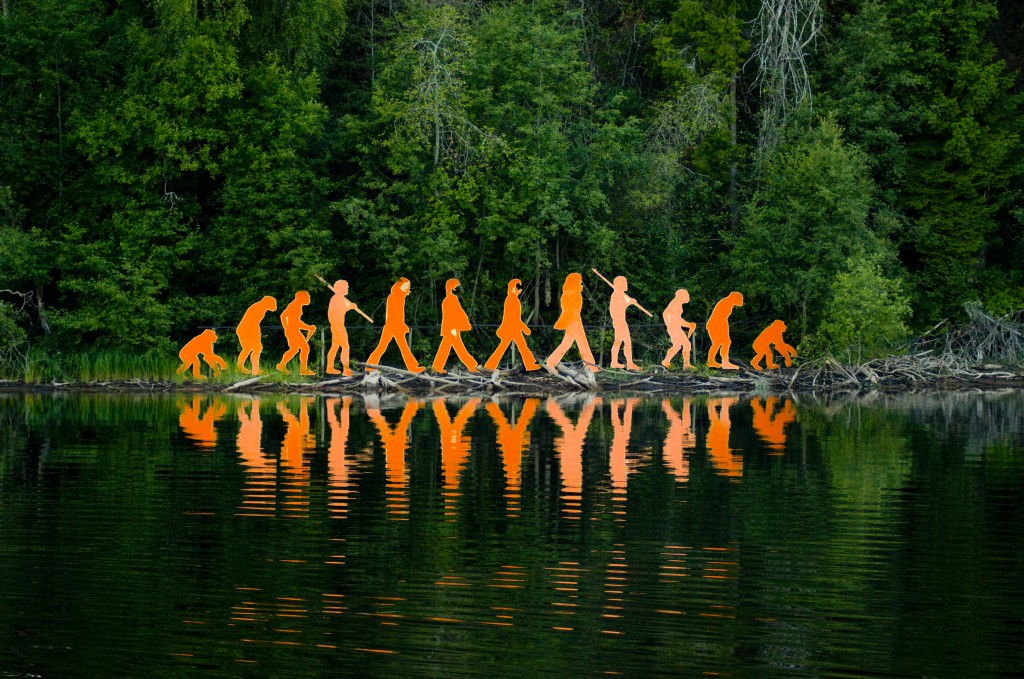“Build some links. Update your metadata. Optimize your site speed. Build some cool content. Have you heard about interactive infographics? They are the new thing!”
That’s just not the way digital marketing works anymore. In fact, I’m currently in the process of trying to get my peers to quit using the term “SEO,” not only when they refer to my job title, but when they refer to the practice of website optimization in general.
I will always be grateful for the opportunity I was given by a now rebranded company called Slingshot SEO. They helped kick-start my knowledge of search with link building and my curiosity guided me from there. It wasn’t too long before I found myself in charge of accounts at a small agency in Portland, saying things similar to the comments above to my clients on a monthly and weekly basis. Since my stint in that position, I have been fortunate enough to link up with The New Group, a bigger agency dedicated to bringing brand experiences to life with data and technology. During my time here, I have decided that I no longer want to be an SEO. Why would I? SEO is limited; digital strategy is comprehensive and lucrative. I truly believe that narrowing your job title and expertise to simply search (even when it includes paid as well) is going to leave you in the dust as time progresses.
I mean, part of this perspective is based on fear. I know if I just hang out and keep up on the latest SEO trends, I am going to be passed up by people who have SEO expertise as only a fraction of their overall skill set.
So let’s take a look at the digital strategist’s evolution into a multitalented professional.
 Source: Wikimedia Commons – Labeled for Reuse
Source: Wikimedia Commons – Labeled for Reuse
Stage 1: The Future Spammer
Ah! That moment when our ancestors first noticed how changing keyword density and building anchor text links could impact rankings on the World Wide Web. I am not here to hate on this early technique. Our practice generally evolves as Google adjusts, and these methods were valid at one point. It is just amazing to me that some people have yet to escape the trap that leaves them hunched over like a prehistoric human. This is the group of SEOs who still looks for shortcuts, evolves black-hat software and have a risk-taking approach to their profession.
Stage 2: The Set It and Forget It-er
You have to respect those who understand the fundamentals of SEO, and this group of ancestors has it down pat. They likely realize in the past few months, character limits for meta tags have changed, and they encourage their clients to make strong content. They can conduct a solid audit and also have a strong understanding of paid search. This group knows how to optimize a site, and they know how search, social, and paid work together. The only problem is this knowledge has a barrier. When it comes to ongoing SEO, this person says “Go do PR,” instead of understanding the principles of link development and how PR efforts can make an impact. There is no reason to look back at this ancestor and be ashamed; it is just sad to see someone who could be a strong strategist work with a client one time and send them off into the wild, because there isn’t enough knowledge of measurement and ongoing tactics.
Stage 3: The Wash, Rinse, Repeater
The next stage of our evolution includes a professional who has a pretty good grip on things. Not only can they help get your SEO campaigns off the ground, but they understand measurement and some changes you can make to improve some basic metrics. They know how to deal with duplicate content from a technical standpoint, know how to build links in an ongoing manner, and provide insightful reporting on a monthly basis. In reality, they have all the tools needed to become a full-fledged digital strategist; they just don’t know that search doesn’t have to live alone. They are confident and skilled, but don’t realize they are capable of combining one skill set with others to become an even better marketer.
Stage 4: The Curious Crusher
The curious crusher is starting to figure out digital marketing is made up of different segments, and the benefits of understanding multiple areas can be a powerful professional tool not only for themselves, but for their clients. All of the sudden, this person has moved beyond recommending copy changes, but is starting to make decisions based on the user experience and providing value to the end-user. Where this person once though they were making an SEO recommendation, they now realize that they just made a UX recommendation to try improving the value of their content. The realization is there, but the scope is not. Hopefully, SEOs who have moved into stage 4 will eventually bridge the gap to stages 5 and 6.
Stage 5: The Explorer
The explorer has a very good picture in their head of just how digital strategy works. They are considering the impact their PR and paid media campaigns have on organic visibility, and they often work to mesh campaign themes together for maximum impact. They have a deep understanding of analytics from both a technical and analytical standpoint and have no problem putting together reports that blend online and offline performance to create a clear picture for their clients. They know content strategy can be the glue that holds their marketing plan together, and that site structure and content prioritization can be linked together and tested to continually make improvements to client properties. The understanding is there, but the practice, patience, and perseverance are not.
Stage 6: The Digital Strategist
The modern-day digital strategist not only knows all of these practices blend together, but understands the pacing and has expertise in all areas. They understand market research can be combined with keyword research to slowly craft personas. They put in hours upon hours to craft an accurate buyer’s journey. They know they will fail at times as they map years’ worth of content and work to build relationships with key influencers in niche markets. They know every idea should be tested, and ongoing optimization is a never-ending process. They gather information from designers, developers, customers, stakeholders, and others to gain a full understanding of their products and properties. They keep an eye on content value and want to provide the best experience possible for their customers. They are starting to include customer loyalty in their reporting and can manipulate analytics data to gain insights that would never be considered in stages 3 and 4. They never get overwhelmed by the fact that they need to understand up to 10 different practice areas at the same time to generate maximum effectiveness. They can recite SEO best practices in their sleep and always know the latest algorithm changes. Did I mention SEO is one of many areas of expertise for this modern-day assassin?
 Source: Flickr – Labeled for Reuse
Source: Flickr – Labeled for Reuse
It is too easy to get caught in stages 1 through 5. If we really want to stay on top of the game, we need to work together to ensure our peers are not taking shortcuts, and deep elements of market research, persona development, buyer’s journey development, user experience, information architecture, content strategy, digital analytics, web development, paid media, direct marketing, events, PR, social, and search are always considered in terms of how they relate to each other and how they impact the bottom line. We are no longer here to drive traffic. We are here to drive interest, drive intent, and conduct ongoing tests that maximize the value of our content to end users both on- and offline. Let’s evolve; let’s not get stuck in the mud.




